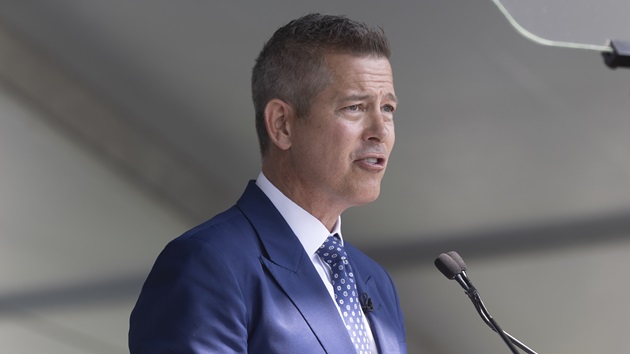
(WASHINGTON) — Nuclear power on the moon is critical to the United States’ space exploration and national security goals, and the U.S. government should “move quickly” to build reactors there before its terrestrial rivals, according to a directive issued by Transportation Secretary and acting NASA Administrator Sean Duffy, which was obtained by ABC News.
One full “day” on the moon is two weeks of light followed by approximately two weeks of darkness (in Earth time). Nuclear energy, referred to as fission surface power, or FSP, in the directive, is a “sustainable” and “high-powered” energy source that can survive through the lunar night and be deployed on other celestial bodies, like Mars, according to Duffy.
“We’re in a race to the moon, in a race with China to the moon,” Duffy said at a press conference on Tuesday. “And to have a base on the moon, we need energy. And some of the key locations on the moon, we’re going to get solar power. But this vision technology is critically important, and so we’ve spent hundreds of millions of dollars studying.”
“Can we do it? We are now going to move beyond studying, and we are going,” Duffy continued. “We have given direction to go. Let’s start to deploy our technology, to move to actually make this a reality.”
When reached for comment by ABC News, NASA said, “We’ll let these directives speak for themselves.”
The directive, dated July 31, calls for a “Fission Surface Power Program Executive” to be named within 30 days, who will implement and oversee the project and will report directly to the NASA administrator. It does not say what exactly the nuclear reactors would power on the moon.
“Since March 2024, China and Russia have announced on at least three occasions a joint effort to place a reactor on the Moon by the mid-2030s,” Duffy said in the directive. “The first country to do so could potentially declare a keep-out zone which would significantly inhibit the United States from establishing a planned Artemis presence if not there first.”
Politico was the first to report on this directive.
A second directive, issued on the same day by Duffy, aims to speed up the development of replacements for the International Space Station, which is set to retire by 2030.
While NASA has never used a fission nuclear reactor in space, it has been using nuclear material to power spacecraft since the 1960s. Known as radioisotope thermoelectric generators, or RTGs, these systems use the heat generated by the decay of plutonium-238, a nuclear element, to create electricity for powering spacecraft and rovers. Currently, NASA’s Curiosity rover on Mars is using an RTG system for its power.
In recent years, billions of dollars have been spent developing a new kind of nuclear reactor called Small Modular Reactors (SMRs). These reactors produce less power than traditional reactors, but are significantly smaller in size. SMRs are still being developed in the U.S. and there are no units currently in operation.
“There’s a certain part of the moon that everyone knows is the best. We have ice there, we have sunlight there. We want to get there first and claim that for America,” Duffy said Tuesday.
Copyright © 2025, ABC Audio. All rights reserved.



